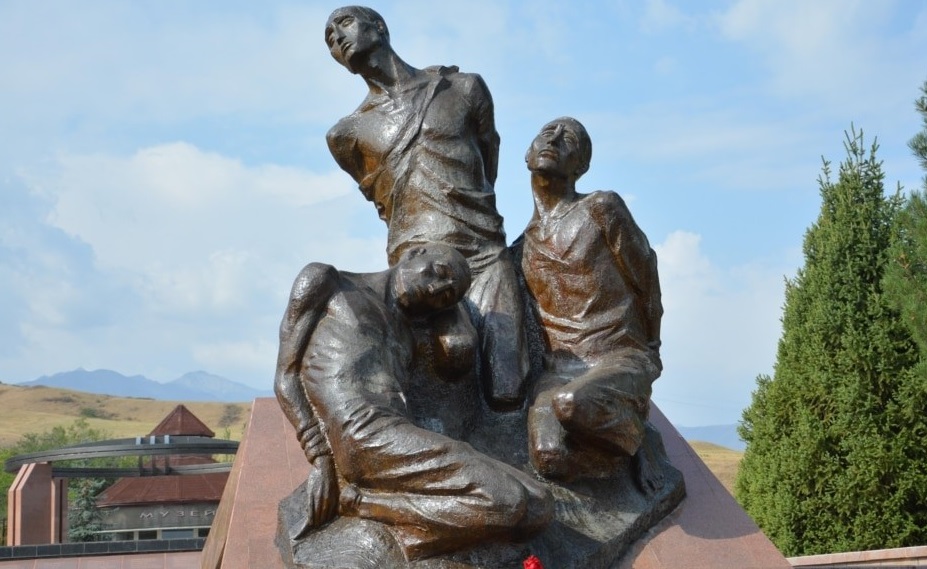The rehabilitation of Soviet-era persecuted in Kyrgyzstan
A law to defend the memory of citizens who suffered persecution under Lenin and Stalin, between 1918 and 1953. Kyrgyz historians speak of at least 40,000 people. A move by President Sadyr Žaparov (himself accused of authoritarianism) who seeks to present himself as the author of a 'great national reconciliation.
Bishkek (AsiaNews) - The deputies of the Žogorku Keneš, the parliament of Bishkek, met in the Committee for Social Policies, to evaluate the text of the current law "On the rights and guarantees of rehabilitated citizens, who have suffered due to repression for their political and religious beliefs, and for social, national or other characteristics”, and together the provisions for the National Archives of the Kyrgyz Republic.
The proposal plans to insert a new article that concerns those convicted for some articles of the Criminal Code of the then Soviet Russia between 1922 and 1926, which were also applied on Kyrgyz territory until 1961, covering the entire Stalinist period, and the waves of persecutions that affected many people.
In the new editorial, the characteristics of political persecution are linked to the actions of the Soviet authorities following the decisions "On the Red Terror", which after the revolution punished those who opposed the revolution and the new communist regime, in the years of the civil war between 1918 and 1920, and even in subsequent ones.
In Kyrgyzstan, and in other Central Asian countries, the counter-revolutionary movement was defined by the term basmačestvo, which summarized the actions of various national liberation groups, but also of affirmation of their ethnic and religious belonging, identifying the basmači as the owners landowners and the baj, the large landowners or farmers enriched by the policies of the 1920s, the so-called kulaki, but also the mullahs and in general the bourgeoisie considered anti-Soviet as an "enemy" class.
One of the authors of the new bill, Žanarbek Akaev, noted that a commission for the rehabilitation of victims of political repression is also being formed at the Institute of History, Archeology and Ethnology of the National Academy of Sciences, the composition of which will include scholars, representatives of non-governmental associations, the Agency for the Defense of Rights, the prosecutor's offices, the Ministry of the Interior, the GKNB services and the state archive. This commission will be officially approved by the Žogorku Keneš.
As Akaev explains, “we want to defend the rights and memory of citizens who suffered persecution under Lenin and Stalin, between 1918 and 1953, to ensure their full rehabilitation and a new understanding of our history.”
Kyrgyz historians speak of at least 40 thousand people to whom the new definitions must be applied, among those who were shot, sent to concentration camps or into exile, condemned by courts or troikas of Soviet memory, the trios of "revolutionary judges".
Now one hundred years have passed since the beginning of the period in question, and rehabilitation for deputies "is an essential mission", confirms the rapporteur, "and they should also do it in the other Central Asian countries, where however there does not seem to be the same sensitivity" .
The process of reviewing historical persecutions is long and tiring, and requires scrupulous archival work and study of sources. In Kyrgyzstan the importance of this initiative takes on particularly sensitive contours, in a current context where Sadyr Žaparov's regime is accused by many of regressing towards forms of authoritarianism and repression increasingly similar to the Soviet past.
The deputies therefore approved the new bill unanimously, thus expressing solidarity with the president, who tries in every way to present himself as the author of a "great national reconciliation".
Among the many persecuted people of Soviet times there were also important intellectuals such as Torokul Ajtmatov, Imanaly Ajdarbekov, Bajaly Isakeev, Kasym Tynystanov and others, shot in 1938 at the end of the most acute phase of Stalin's terror and accused then of being "enemies of the people", while now they are the main candidates to form a new “pantheon of Kyrgyz culture”.
The place of their burial was found only after the end of the Soviet regime, and the monument in their honor is the symbol of a country that is still struggling to be reborn, freeing itself from its contradictions and the specters of its past.
07/02/2019 17:28







.png)










